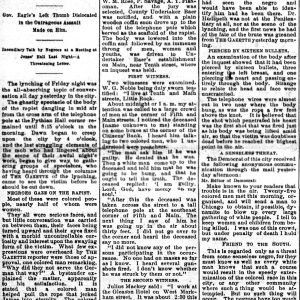 James Lynching Article
James Lynching Article
Time Period: Post-Reconstruction through the Gilded Age (1875 - 1900)
 James Lynching Article
James Lynching Article
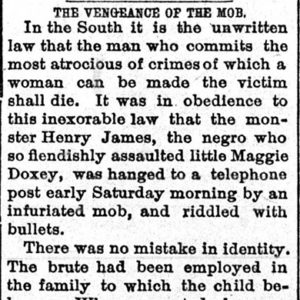 James Lynching Editorial
James Lynching Editorial
Jefferies, Oscar (Lynching of)
 Jefferies Lynching Article
Jefferies Lynching Article
 Jefferson County Lynching Article
Jefferson County Lynching Article
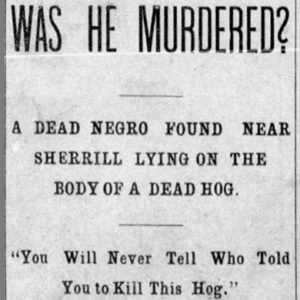 Jefferson County Lynching Article
Jefferson County Lynching Article
Jefferson County Lynching of August 1897
Jefferson County Lynching of December 1897
 Jefferson School
Jefferson School
Jenkins, Buck (Lynching of)
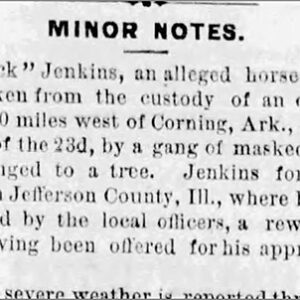 Buck Jenkins Lynching Story
Buck Jenkins Lynching Story
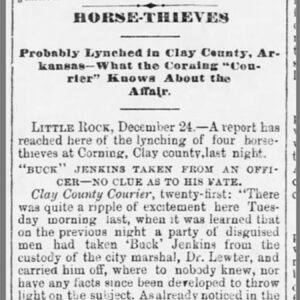 Buck Jenkins Lynching Story
Buck Jenkins Lynching Story
Jenkins, S. A. (Lynching of)
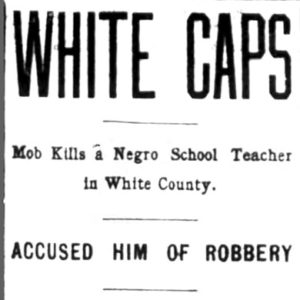 S. A. Jenkins Lynching Article
S. A. Jenkins Lynching Article
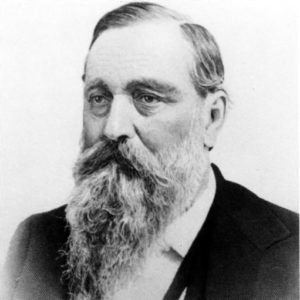 Roscoe Jennings
Roscoe Jennings
Jennings, Roscoe Greene
 Jerry Blalock Execution Story
Jerry Blalock Execution Story
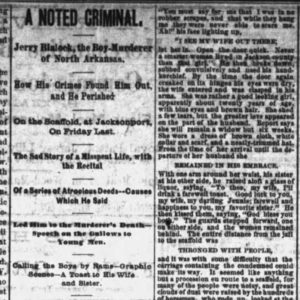 Jerry Blalock Execution Story
Jerry Blalock Execution Story
Jim Crow Laws
Jobe, John R.
 John Howard Steamboat
John Howard Steamboat
 John J. Clendenin Obituary
John J. Clendenin Obituary
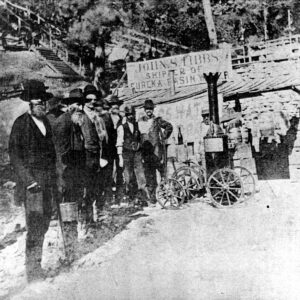 John S. Tibbs Company
John S. Tibbs Company
Johnson (Lynching of)
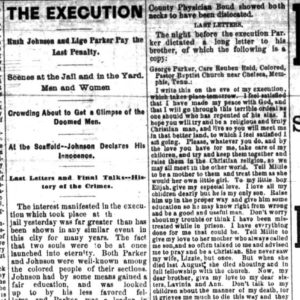 Johnson and Parker Execution Story
Johnson and Parker Execution Story
Johnson County Executions of 1883
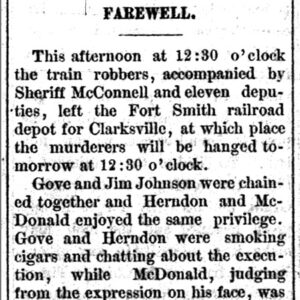 Johnson County Executions Story
Johnson County Executions Story
 Johnson Lynching Article
Johnson Lynching Article
Johnson, Anthony “Andy” (Execution of)
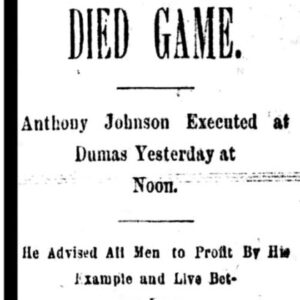 Anthony Johnson Execution Article
Anthony Johnson Execution Article
Johnson, William (Execution of)
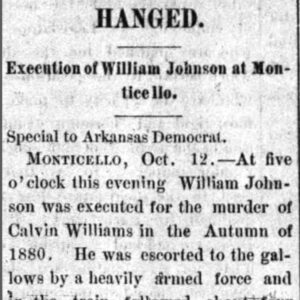 Story on the Execution of William Johnson
Story on the Execution of William Johnson
Johnston, Lewis, Jr.
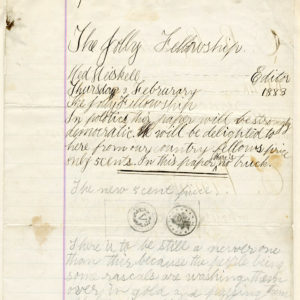 The Jolly Fellowship
The Jolly Fellowship
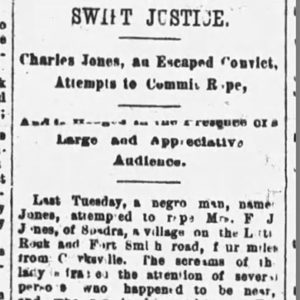 Charles Jones Execution Article
Charles Jones Execution Article
Jones, Charles (Execution of)
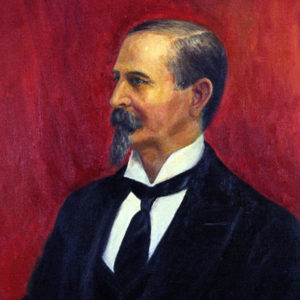 Daniel Jones
Daniel Jones
Jones, Daniel Webster
Jones, Green Hill
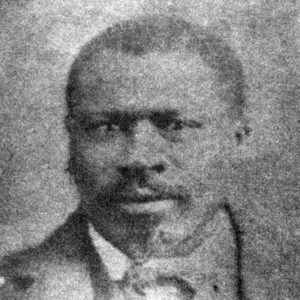 Green Hill Jones
Green Hill Jones
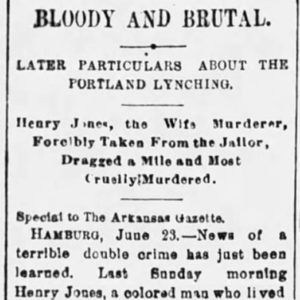 Henry Jones Lynching Article
Henry Jones Lynching Article
Jones, Henry (Lynching of)
 Henry Jones Lynching Article
Henry Jones Lynching Article
 J. K. Jones
J. K. Jones
Jones, James (Lynching of)
Jones, James Kimbrough
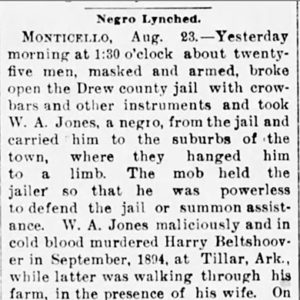 James Jones Lynching Article
James Jones Lynching Article
 James Jones Lynching Article
James Jones Lynching Article
Jones, Jesse (Execution of)
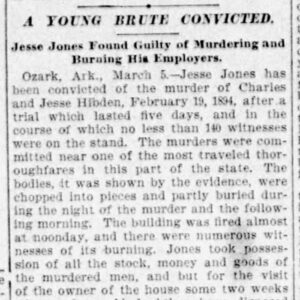 Jesse Jones Conviction Story
Jesse Jones Conviction Story




